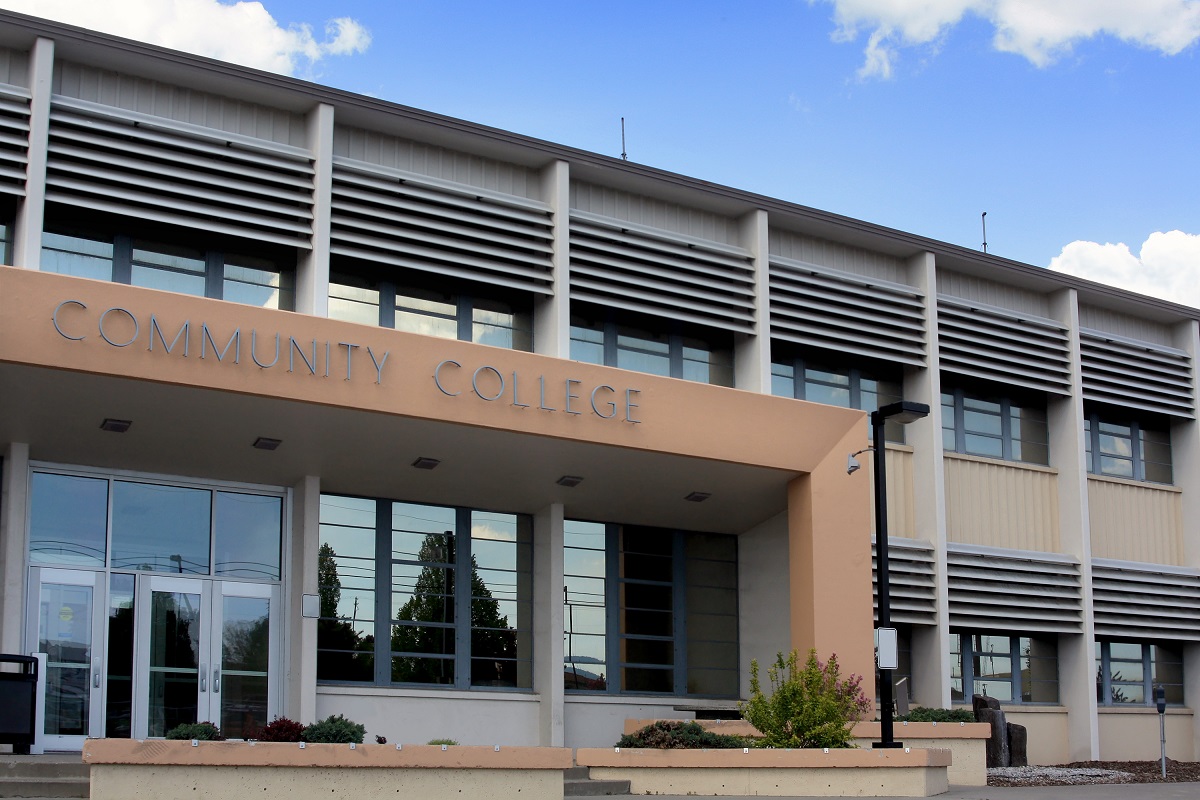“I’m texting you to thank you for the training that I received in your class because it just saved my life,” read a message Patterson Joint Unified School District truck driving teacher Dave Dein received last year from a former student. Attached was a picture of a semi-truck parked out on the interstate with the right front tire gone.
“He had a front tire blowout, which is probably one of the most dangerous things you could have in a commercial truck,” said Dein — the recent California recipient of the 2025 Association for Career and Technical Education Teacher of the Year Award.
Dein introduced the truck driving program at Patterson High School seven years ago, making it one of the nation’s first high school programs. Now, the district’s trucking curricula is being replicated at other schools across the country through The Next Generation in Trucking Association, a nonprofit Dein co-founded in an effort to prepare students to meet a significant industry need.
According to the American Trucking Association, the U.S. is short about 70,000 drivers today, with another 25 percent of current drivers expected to age out of the profession in the next five years, Dein said.
“The trucking industry is struggling with a driver shortage, so there’s a huge demand and the great thing about that is it does create a lot of opportunities for our students,” he said.
That need can be felt at the local level as well, explained Patterson Joint USD Superintendent Reyes Gauna. “We have all these big facilities here — we have Grainger Industrial Supply, we have CVS, we have Amazon. We’re in a community where we have a lot of industry,” he said, noting that trustees and superintendents both past and present have strongly believed in and supported the program.
Truck driving has proven to be an important program for students who don’t want to go on to college right after high school, Gauna said. “This program gives them an industry that is a signature for our state and for our country and is really in need of these students. I think that … affords them that opportunity to feel that they’re a contributing member to society, not only on a state level, but a national level.”
The program
The Patterson program focuses on professional driver qualities. “What we created is not a traditional truck driving school. I think most truck driving schools focus on the skill sets — how to actually drive the truck,” Dein said. “We start off with a mindset first and then we focus on the skillset. We look at creating what we call a professional driver, not just a driver.”
Students are prepared to meet the U.S. Department of Transportation’s Federal Motor Carrier Safety Administration Entry Level Driver Training (ELDT) standards. The program now has three trucks that are primarily used to teach pre-trip inspections, practice straight line backing on school property, and safely replicate the dangers of distracted driving and driving under the influence (an ELDT standard).
However, perhaps one of the most valuable aspects of the program is its use of driver simulators and emulators that allow Dein to teach students how to drive trucks safely by focusing on things like hazard perception.
“One of the advantages of using simulators is we can replicate experiences that I cannot teach in real life. For example, how do you handle a front tire blowout?” Dein said, referencing the text from his former student. “He said when that thing blew, he had no time to think, he just reacted. And that’s muscle memory, that’s the valuable component of using driving simulators.”
The truck driving program isn’t just about getting students behind the wheel, but preparing them for a long, healthy career, he continued. About 70 percent of truck drivers in the U.S. are considered obese, and truck drivers have a life expectancy 16 years shorter than the average American, Dein said.
“This is not okay. So, we’ve included in the curriculum a program that teaches proper lifting techniques and how to move around that truck safely to reduce workplace injuries,” he explained. The district also created a program with Dr. Mark Minera, owner of Supply Chain Fitness, which Dein said, “teaches young people how to have a healthy life on the road through nutrition and exercise, and also the mental health component, which is not addressed with most truck driving schools.”
Post-grad opportunities
Unlike some CTE pathways that allow students to go straight into their desired career, the nature of the trucking industry means students may have to bide their time. Not all industry partners can hire graduates at the age of 18 years old, Dein said. Some industry partners may have insurance restrictions, for example, and federal regulations related to interstate commerce bar drivers from crossing state lines until they are 21. “In California, we have a lot of real estate, and we also have a lot of agriculture and a lot of construction, so there are a lot of opportunities for our students to go right into a truck driving position,” Dein continued.
The district has also worked with industry partners to create career pathways that allow students to work with them in some capacity — e.g. driving a shuttle truck on the yard, working in the warehouse — while obtaining their Class A driving position.
At least four graduates have gone on to start their own trucking companies, and another is one of the youngest drivers ever for Walmart, with a starting salary of $106,000 a year, Dein said.
The program “empowers a lot of people,” particularly students who “have been labeled a failure just because they don’t do well in some of the core subjects,” Dein said. “And I didn’t realize the impact we were having until I had a parent that came to me one day after school and said, ‘I’m here to shake your hand.’ And I’m like, ‘Well, for what?’ And he said, ‘For saving my son, Javier.’
“He said before Javier took the class he was tied up in gang activity and drug dealing,” Dein continued. “But since he took the trucking class and he realized that he was valuable, he does have skills he can contribute — that changed everything.”
Javier became the first graduate of the program, the youngest driver ever for a local company, and even started his own trucking company.
“One day I was talking to him, he says, ‘Mr. Dein, my goal is to grow my own company, but not for the sake of having a big company — I want to create opportunities for the graduates of your program. I want to be a mentor to the next generation.’ And that’s when it hit me,” Dein said. “You don’t just change a life, you change a generation.”





